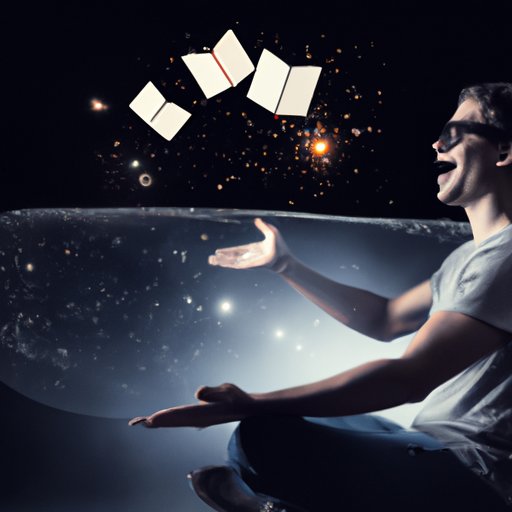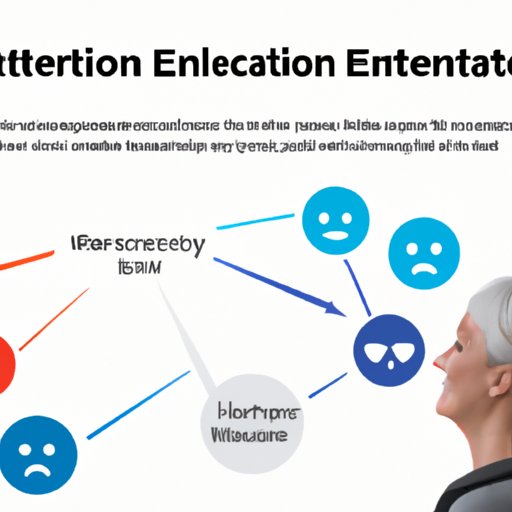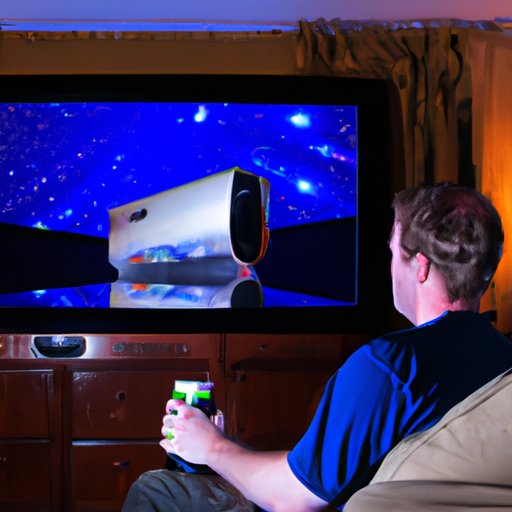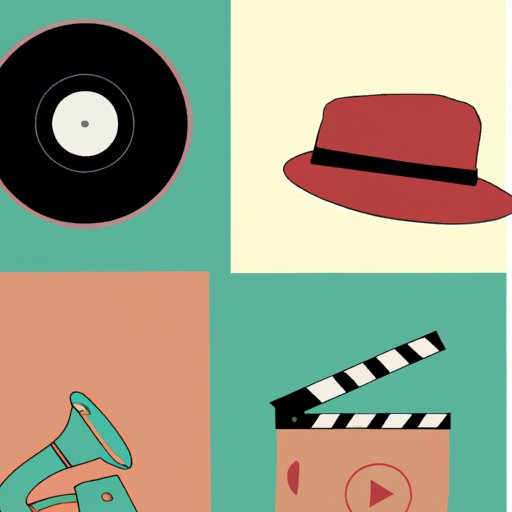Introduction
Movies have been an integral part of our culture for more than a century. From silent films to blockbusters, these art forms have captivated audiences around the world. But why do people watch movies? There are many reasons why people enjoy watching films, from their ability to transport us to other worlds to the shared enjoyment of viewing them with friends and family. In this article, we will explore the various elements that draw viewers in and keep them coming back for more.

Exploring the Power of Storytelling in Movies
Storytelling is one of the most powerful tools in a filmmaker’s arsenal. When done right, a good story can captivate an audience and make them care about the characters and the journey they embark on. This is achieved by using a variety of techniques, such as creating engaging narrative structures, developing complex characters and plots, and resolving conflicts in satisfying ways.
Narrative structure is key when it comes to telling a compelling story. By establishing a clear beginning, middle, and end, filmmakers can ensure that viewers remain engaged throughout the film. They also use techniques like flashbacks and flash-forwards to add depth and complexity to the story. Additionally, creating strong characters with distinct personalities helps to bring the story to life. These characters must go through meaningful arcs that challenge them and cause them to grow in order for the story to be truly impactful. Finally, providing a satisfying resolution to the conflict is essential in order for viewers to feel satisfied with the outcome of the film.
In addition to narrative structure, emotional arcs also play a major role in engaging viewers. Creating characters that experience a range of emotions can help make them more relatable and allow viewers to connect with them on a deeper level. Films often employ tragedy and triumph, hope and despair, joy and sorrow to create an emotional rollercoaster that leaves viewers feeling moved and inspired.

Examining the Role of Emotional Connection in Movie Viewing
The ability to connect with characters on a personal level is one of the main reasons why people watch movies. Many viewers find themselves identifying with protagonists and their struggles, which can lead to a heightened sense of empathy and understanding. This can be especially true for films that tackle issues relevant to today’s society, such as racism, sexism, and classism. By exploring these themes through the lens of a well-crafted story, filmmakers can provide viewers with a unique perspective and inspire them to think more deeply about the world around them.
Shared experiences also play a role in connecting viewers with films. Whether it’s a beloved classic or a modern blockbuster, there is something special about watching a movie with others. Seeing a film with friends and family can create a sense of belonging, as viewers bond over their mutual love of the same movie. Going to the theater to see a movie can be an even more immersive experience, as the collective energy of the audience helps to elevate the viewing experience.
Music and sound can also be used to evoke emotion in viewers. From sweeping orchestral scores to poignant sound effects, filmmakers often employ music to create atmosphere and convey emotion. This can be especially effective during pivotal moments in the film, as the music helps to heighten the intensity and drive home the point of the scene.
Analyzing the Impact of Visuals and Music in Film Appreciation
Visuals can also be used to great effect in movies. Cinematographers employ a wide range of techniques to tell the story, from framing shots to choosing the right color palette. By creating visually stunning images, directors can draw viewers into the world of the film and create a more immersive experience. Lighting and composition can also be used to convey messages, whether it be to indicate a character’s mental state or to add tension to a scene.
Music can also be used to great effect in film appreciation. From sweeping orchestral scores to pulsing electronic beats, the right soundtrack can add depth and emotion to a scene. Music can also be used to create atmosphere, from a suspenseful horror score to a jaunty comedy track. By carefully crafting the musical accompaniment, filmmakers can create a more immersive experience for viewers.

Investigating the Appeal of Escapism in Movie Viewing
For many viewers, movies provide an escape from reality. Fantasy elements such as magic and superheroes can transport viewers to alternate worlds and help them forget their day-to-day troubles. Comedy and action films can also provide relief from reality, as viewers laugh and cheer along with the characters. Special effects can also be used to create immersive experiences, allowing viewers to feel as if they are part of the story.
Escapist films can also provide an opportunity to explore difficult topics in a safe environment. By using fantasy elements to mask real-world issues, filmmakers can address topics such as racism, sexism, and classism without being too on-the-nose. This allows viewers to process these issues without feeling overwhelmed or threatened, thus providing a more palatable way to explore these topics.
Understanding the Role of Collective Experiences in Movie Going
Going to the theater to watch a movie can be an incredibly rewarding experience. Not only does it offer viewers the chance to escape into another world, but it also provides them with the opportunity to share in a collective experience. Moviegoers often find themselves cheering, laughing, and crying along with the characters on screen, and these reactions can be even more powerful when experienced with others. Watching a movie premiere or attending a special screening can be especially thrilling, as the added excitement of being in the presence of fellow fans can make the viewing experience even more enjoyable.
Conclusion
From the power of storytelling to the appeal of escapism, there are many reasons why people watch movies. By examining the role of narrative structure, emotional connection, visuals and music in engaging viewers, as well as the importance of collective experiences in movie going, this article has explored why people watch films. Ultimately, it is the combination of all these elements that make movies so captivating and enjoyable.
(Note: Is this article not meeting your expectations? Do you have knowledge or insights to share? Unlock new opportunities and expand your reach by joining our authors team. Click Registration to join us and share your expertise with our readers.)
